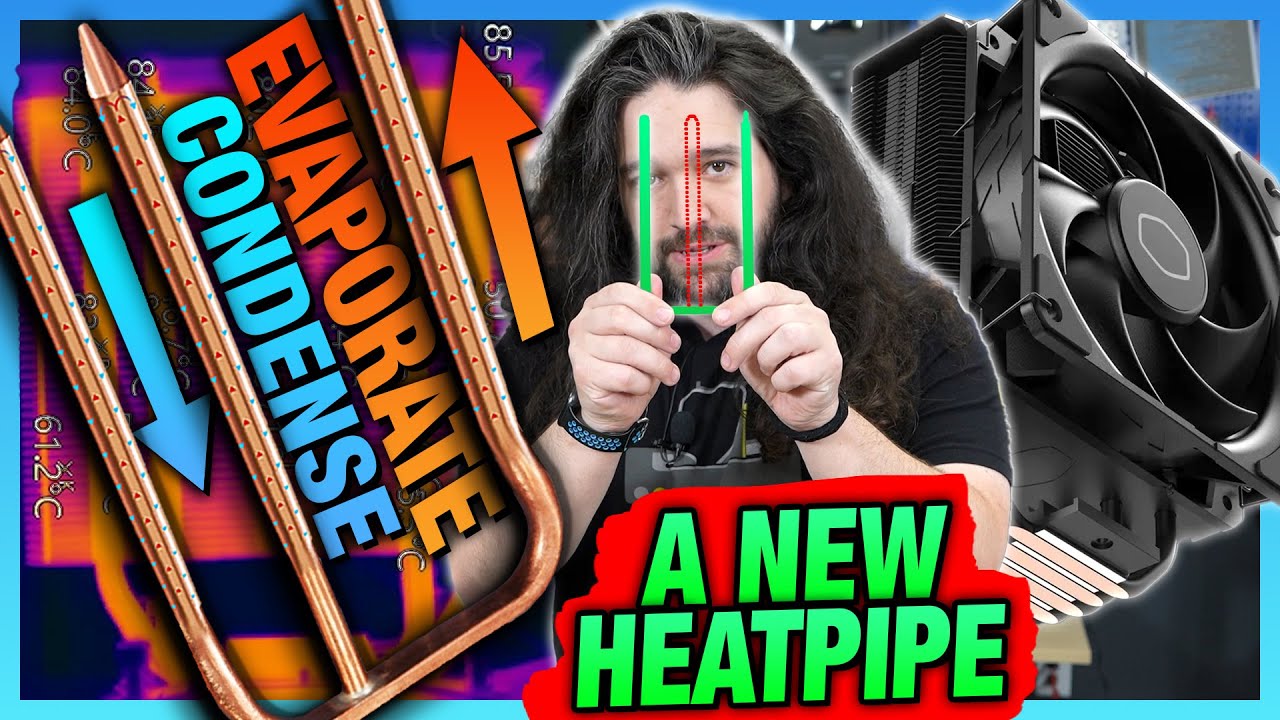The video examines Cooler Master’s innovative “3D” heat pipes, which feature a central pipe designed to improve heat distribution and capacity, showing promising experimental results such as faster cooling and more even heat spread. However, manufacturing challenges, low yield rates, and high production costs currently limit widespread adoption, and real-world testing will be needed to confirm their practical performance benefits.
The video explores Cooler Master’s innovative “3D” heat pipes, which feature a third, central pipe extending from the traditional heat pipe design. The host conducts a scientific experiment to test the thermal performance and behavior of these new heat pipes using a dummy heater with controlled heat loads. This setup includes a benchtop power supply, thermal sensors, and thermal imaging to analyze how effectively the 3D heat pipes distribute and transfer heat compared to traditional designs. The goal is to determine if the new design offers real performance benefits or if its advantages are primarily marketing.
Cooler Master claims that the 3D heat pipes can handle higher heat loads, up to 150 watts, compared to about 80 watts for traditional pipes. The experiment involves measuring how quickly the heat pipes heat up and cool down under a 55-watt load, with thermal imaging used to observe heat distribution. Results indicate that the 3D heat pipe heats up slightly slower but cools down faster than a standard heat pipe, suggesting improved thermal performance. Thermal images show relatively even heat distribution across the pipes, with some minor temperature differences, indicating that the 3D design may help spread heat more evenly.
The host discusses the manufacturing challenges associated with the 3D heat pipes, noting that the yield rate is currently around 50%, significantly lower than the over 99% yield of traditional heat pipes. Precise tolerances are required to ensure proper fitting and function, making production more difficult and costly. Cooler Master’s engineers explained that the complexity of welding and assembling the third pipe, along with ensuring proper water flow and vapor movement within the pipes, contributes to these manufacturing hurdles. Despite these challenges, Cooler Master emphasizes potential benefits such as reduced weight, lower noise levels, and improved heat distribution.
White papers provided by Cooler Master support the technical claims, illustrating how the 3D heat pipes could outperform traditional designs in terms of heat capacity and flow efficiency. They argue that the offset placement of the pipes helps avoid dead zones behind the fan hub and improves water return speed within the pipes. The white papers also compare the thermal performance of different pipe diameters, highlighting the significant increase in heat handling capacity with the 3D design. However, the host remains cautious, emphasizing that real-world performance will only be confirmed once the products are available and tested in actual cooling solutions.
In conclusion, while the experiments and data show promising signs that the 3D heat pipes may offer improved heat distribution and faster cooling, the host notes that manufacturing difficulties and lower yields currently hinder widespread adoption. Cooler Master admits that developing this technology was challenging and costly, with production costs reportedly high. The host emphasizes the importance of real product testing and reviews once the heat sinks are released, as lab experiments alone cannot fully predict performance in real-world applications. Overall, the video provides an insightful look into the potential and challenges of this innovative cooling technology.
